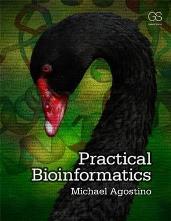Practical Bioinformatics
 Michael Agostino
Michael Agostino
Garland Science, £25.00
In the last 20 years the field of bioinformatics has grown exponentially and now reaches into many areas of biology. There are currently over 200 billion nucleotides from nearly half a million species on record, so it has been necessary to develop increasingly sophisticated methods of searching this data.
As the author states: "One of the goals of the field of bioinformatics is data reduction. With the literal deluge of data, the only way for us to possibly interpret the information is that the quantity is reduced to manageable levels". Put simply, biologists need to see the wood from the trees.
This is more of a manual, as one would have for a camera or car, than a textbook. Each chapter needs to be read with a computer at hand, in order to follow and learn the stepwise approach to information retrieval.
The book is well laid out, focusing initially on finding and manipulating single DNA or protein sequences from a number of different databases.
Agostino then moves on to the comparison of sequences from different species to form phylogenetic trees. About two thirds of the book deals with nucleic acids, the remainder with protein sequences and conformation (there are some useful 3D illustrations of protein structures at the end of the book).
Anyone who deals with biochemical data would find this work of great value. Even an absolute novice to bioinformatics would, with a little practice, be able to retrieve and manage data.
Dr Leighton Dann


